COLIN SIMPSON
MOST people who love to travel probably have a destination they’ve always wanted to visit, but have never quite got round to. For Sue and I, it was India.
We’d been talking about going there since we got married nearly 25 years ago, and in the intervening years had bought several new editions of the Lonely Planet India guide that remained unused on our bookshelf.
We were both attracted, like so many, by the colour, the glamour, the exotic splendour of the country. Of course we knew that, like anywhere, it had problems, for example widespread poverty.
In addition, I had a family link as my father served in India as a British Army captain during the Second World War. Yet still we kept putting off our trip of a lifetime. Even when we were living in Dubai, just three hours’ flight time from India, only Sue made it, for a few days’ yoga retreat outside Bangalore.
The time never seemed right, somehow – until a couple of years ago, when we booked a tour with the storied travel company Cox & Kings.
What’s the Big Deal With Cox & Kings?
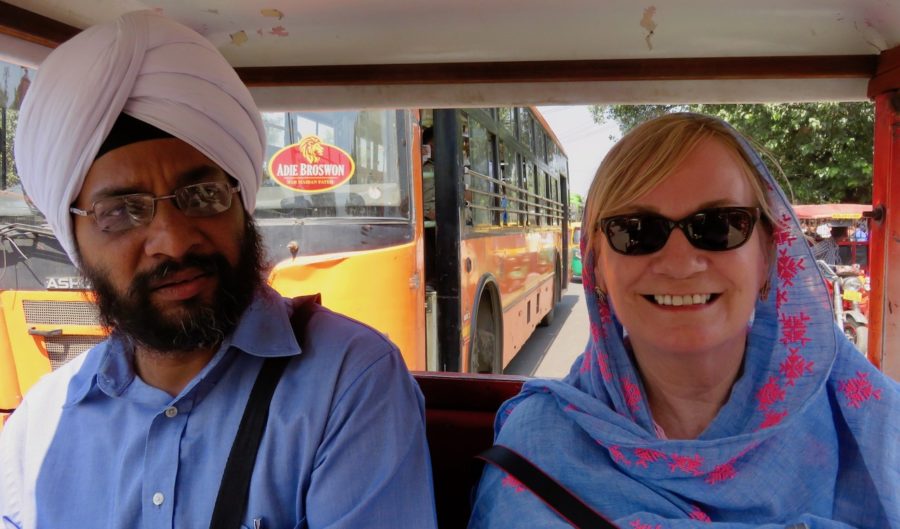
A NUMBER of companies offer India tours, but for us there was only one choice. Cox & Kings’ roots go back to 1758, when founder Richard Cox was appointed as a military agent, providing a range of services to British Army regiments such as supplying clothing and weapons and transporting belongings. The company expanded into shipping and banking, and merged with a rival, Henry S King & Co, after the First World War. The shipping arm arranged tours and the transportation of goods to India, South Asia, Egypt and elsewhere. Today the company specialises in arranging high-end travel in a large number of countries. It has been struggling with financial problems. For us, though, it seemed a good choice. We figured a company that had been in business that long with a long-term focus on India would give us the sort of dream holiday we wanted. Also, as first-time visitors, we felt that having guides and drivers would ease our way. We had heard all the stories about Delhi belly, and going high-end seemed the best way to avoid becoming ill. As a luxury operator, though, Cox & Kings is not cheap. Our 14-day trip is by far the most expensive holiday we have ever booked (we paid the full price ourselves). So the aim of this post is to explore whether it was worth it.
Where We Went, and What Was Included

WE booked the classic Golden Triangle itinerary – Delhi, Agra and Jaipur – a favourite first-time choice for visitors to India. We had an add-on stay in Shimla. Delhi is the sprawling capital, Agra is home to the Taj Mahal, the pink city of Jaipur is the capital of Rajasthan state, and Shimla in the foothills of the Himalayas was the summer capital when Britain ruled India. Return economy flights from Hong Kong, transfers, accommodation, excursions and some meals were included. Local Cox & Kings agents were available to help us throughout the trip. Hotel extras and incidentals such as bar bills, laundry, tips and phone calls were not included. We chose, at extra cost, to have our own car, driver and guide rather than travelling with a group.
Hotels

THE biggest disappointment of the whole trip was the fact that our first experience of India was a tired, dull old hotel in a commercial area that’s seen better days. It certainly did not match the description in our itinerary – “Modern décor blends with traditional Indian charm.” We were amazed that Cox & Kings, a luxury specialist, offered such a property. We could have upgraded to another hotel, Claridges, at extra cost, but you have to draw the line somewhere when it comes to price. The hotel was described as “5 star” in the itinerary, so we assumed it would be good, but it fell far short of any international concept of five-star quality. And there was a distinct lack of charm when we checked out and the manager tried to charge us for our dinner the night before, refusing to give way even though we produced documents proving this was included in the price of our tour. We were due to stay at the same hotel at the end of our trip before flying out but asked Cox & Kings to book us in somewhere else. We ended up at a hotel near the airport, miles from anywhere we might wish to go in Delhi. I asked Cox & Kings to comment on their use of what in our view was a substandard hotel, but they declined to do so. The next hotel, the Trident at Agra, was entirely different, a modern property built around a pool and gardens with attentive staff. The Samode Haveli in Jaipur was the sort of place you dream of staying at in India – a 175-year-old converted mansion with fabulous public rooms and great outdoor dining. And Shimla’s Oberoi Cecil was another heritage gem.
Drivers, Guides

FOR much of the trip we had a fabulously safe, steady and helpful driver called Ratta. While we travelled between cities by train, he drove ahead and met us at our next stop. The car was a comfortable Toyota compact MPV. We had a different driver and a smaller car to take us from Kalka train station up to Shimla. He knew the winding, tricky road well and was also very safe. We had a different guide in each city. They were all pretty good, though the one at Agra stood out because, though he had visited the Taj Mahal many, many times, his interest and pride in the building remained undimmed.
Food

AS mentioned above, we had thought that by going high-end we’d avoid the tummy problems many Westerners encounter in India. But this did not turn out as well as we’d hoped. While we were never drastically ill, we both suffered a bit. By the time we reached Shimla I could eat only simple food, which was frustrating given the quality of the fare on offer in the Oberoi Cecil’s dining room.
I don’t think the problem was any lack of kitchen hygiene. It’s more that, though we like Indian food, too much of it is hard for the Western stomach to take. Spicy curry dishes at breakfast time are a) difficult to resist, and b) probably not a good idea. If going five-star doesn’t protect you from falling ill, then I don’t see what you can do to avoid it. Perhaps it’s just something you have to accept when you go to India.
Sights
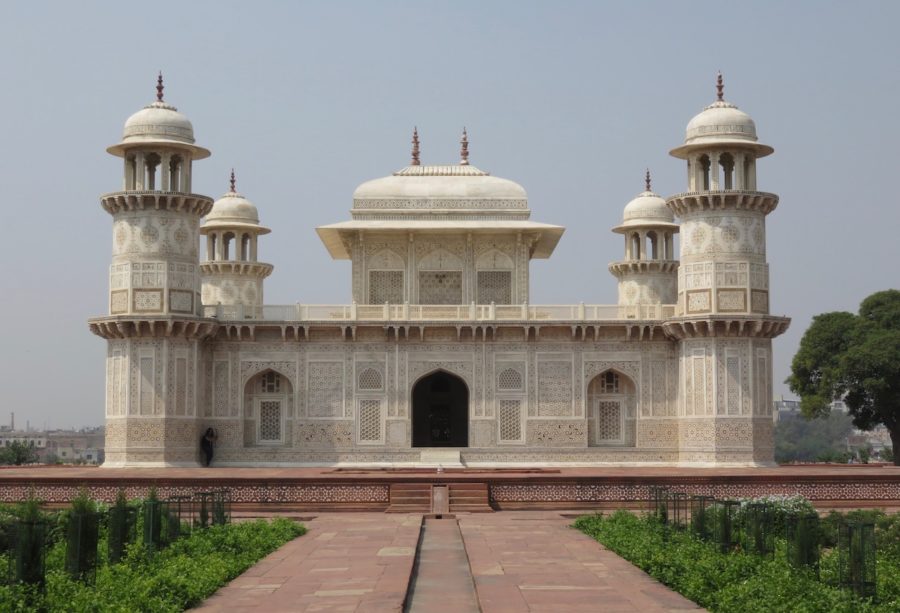
THE knockout attraction was, of course, the Taj Mahal. We saw it at both sunset and sunrise, and it was stunning both times. Other Agra highlights included the fort, a tomb known as the “baby Taj”, and a stop-off to look at the Jal Mahal, a palace in the middle of a lake. In Delhi, we glimpsed the Red Fort from a distance (it’s closed on Monday, the day we were there), and admired New Delhi’s impressive government buildings designed by Sir Edwin Lutyens and Sir Herbert Baker. Jaipur’s Amber Fort is imposing and impressive, while the famous Palace Of Winds was disappointing, little more than a grand façade on a busy road. But all in all the sights were amazing, and it was wonderful to see them.
So, Was It Worth It?
 TRAVELLING with Cox & Kings certainly made things easy. We were met everywhere, so the fact that the cities were all new to us didn’t matter. The agents were able to solve any little local difficulties that arose. And crucially, they were able to help us with our luggage, striding up station stairs with our suitcases and placing them on the rack above our seats. The guides were pretty informative, and knew when to leave us on our own as we explored the palaces, forts and tombs. They also dealt with practical matters such as buying entry tickets to attractions, and helping us to ward off hawkers selling trinkets. We felt they saved us from getting ripped off a number of times. The drivers, as mentioned, were very good. So yes, for a one-off trip of a lifetime, I’d say it probably was worth it. But if we were doing something like this again we would shop around and get other quotes – and we’d check out the hotels more carefully in advance.
TRAVELLING with Cox & Kings certainly made things easy. We were met everywhere, so the fact that the cities were all new to us didn’t matter. The agents were able to solve any little local difficulties that arose. And crucially, they were able to help us with our luggage, striding up station stairs with our suitcases and placing them on the rack above our seats. The guides were pretty informative, and knew when to leave us on our own as we explored the palaces, forts and tombs. They also dealt with practical matters such as buying entry tickets to attractions, and helping us to ward off hawkers selling trinkets. We felt they saved us from getting ripped off a number of times. The drivers, as mentioned, were very good. So yes, for a one-off trip of a lifetime, I’d say it probably was worth it. But if we were doing something like this again we would shop around and get other quotes – and we’d check out the hotels more carefully in advance.
Top tips: Getting a visa for India used to be quite time-consuming, but now you can do it all easily online. The first thing you should do after you land is buy a local SIM card for your phone. On our trip this was invaluable for calling the driver and asking him to pick us up somewhere. And don’t forget to pack some Imodium. Read the itinerary really carefully so you know in advance exactly what you will be shown and where you will visit.
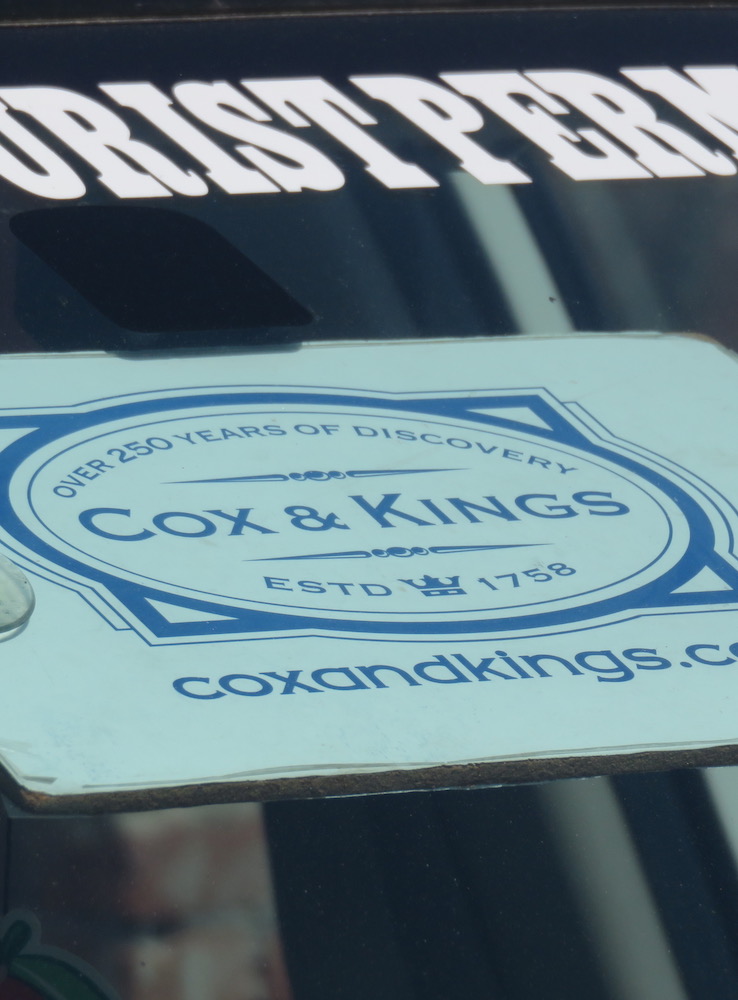
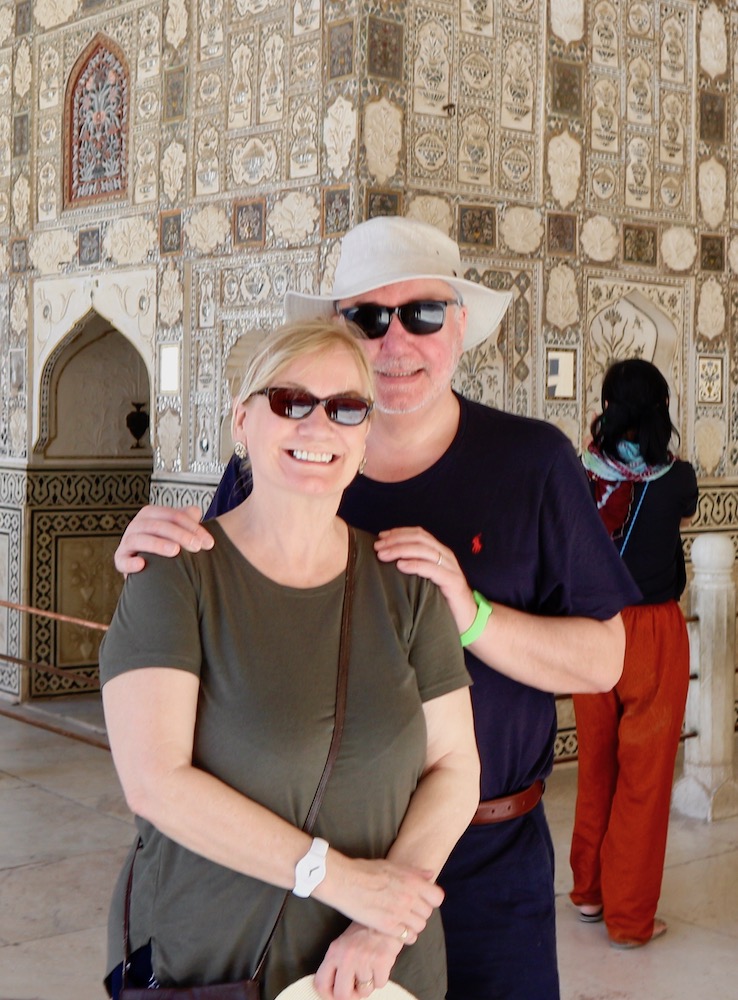
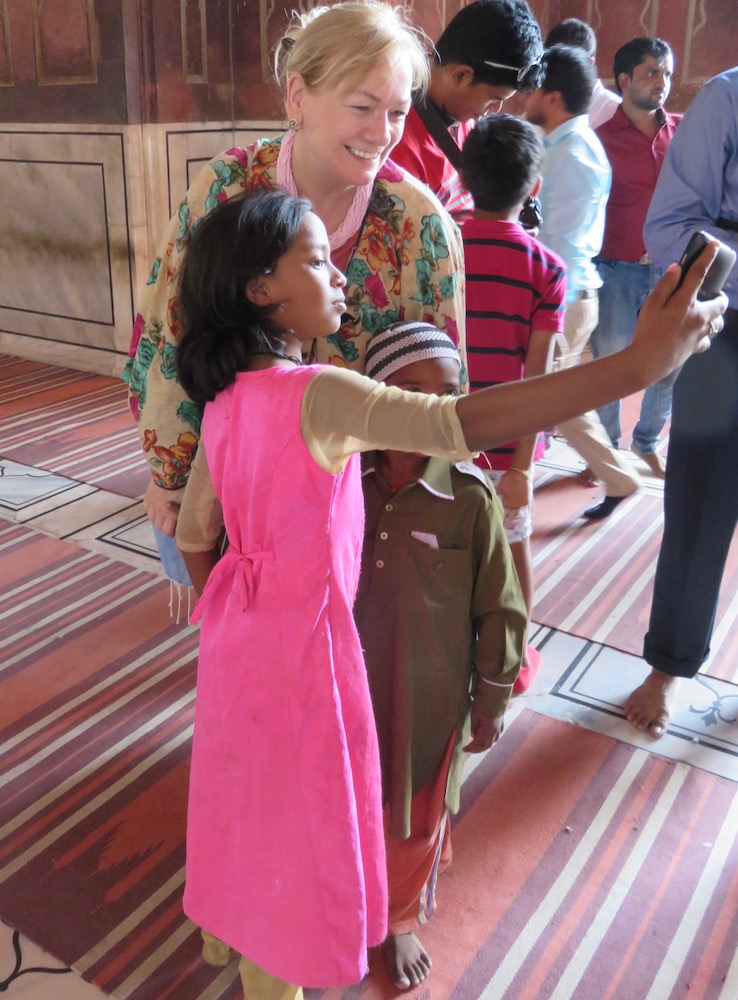

August 2019
MORE INFO
 COX & KINGS don’t operate only in India, and the company’s official site gives details of the many countries it takes people to. READ MORE
COX & KINGS don’t operate only in India, and the company’s official site gives details of the many countries it takes people to. READ MORE
RELATED
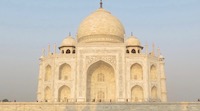 THE TEMPLE OF LOVE: It’s the symbol of India, it’s one of the world’s most famous buildings, and it comes with a heart-breaking love story. The Taj Mahal has it all… READ MORE
THE TEMPLE OF LOVE: It’s the symbol of India, it’s one of the world’s most famous buildings, and it comes with a heart-breaking love story. The Taj Mahal has it all… READ MORE
 DELHI ATTRACTIONS: We kicked off our amazing trip to India with Delhi, on a Monday – the day the Red Fort is shut. So what else is there to do in the nation’s capital? READ MORE
DELHI ATTRACTIONS: We kicked off our amazing trip to India with Delhi, on a Monday – the day the Red Fort is shut. So what else is there to do in the nation’s capital? READ MORE
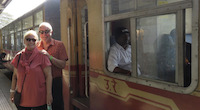 SHIMLA, QUEEN OF HILLS: Government officials once retreated to Shimla in the foothills of the Himalayas to escape India’s blazing hot summers. Now tourists make the same journey… READ MORE
SHIMLA, QUEEN OF HILLS: Government officials once retreated to Shimla in the foothills of the Himalayas to escape India’s blazing hot summers. Now tourists make the same journey… READ MORE
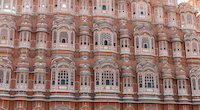 INDIA’S PINK CITY: Jaipur, the Pink City in Rajasthan, is one of the most evocative names in India and a highlight of anyone’s trip – and it’s just become a Unesco World Heritage Site… READ MORE
INDIA’S PINK CITY: Jaipur, the Pink City in Rajasthan, is one of the most evocative names in India and a highlight of anyone’s trip – and it’s just become a Unesco World Heritage Site… READ MORE
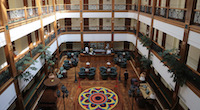 RUDYARD KIPLING COUNTRY: Staying at the Oberoi Cecil in Shimla, India, means you’re never far from the story of author Rudyard Kipling, but be warned: There are monkeys, too! READ MORE
RUDYARD KIPLING COUNTRY: Staying at the Oberoi Cecil in Shimla, India, means you’re never far from the story of author Rudyard Kipling, but be warned: There are monkeys, too! READ MORE
RECOMMENDED
 TEN THINGS WE LEARNED: Our up-to-the-minute guide to creating a website, one step at a time. The costs, the mistakes – it’s what we wish we’d known when we started blogging. READ MORE
TEN THINGS WE LEARNED: Our up-to-the-minute guide to creating a website, one step at a time. The costs, the mistakes – it’s what we wish we’d known when we started blogging. READ MORE
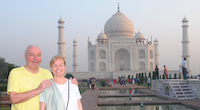 WELCOME TO OUR WORLD! Afaranwide’s home page – this is where you can find out about our latest posts and other highlights. READ MORE
WELCOME TO OUR WORLD! Afaranwide’s home page – this is where you can find out about our latest posts and other highlights. READ MORE
 TOP 10 VIRTUAL ATTRACTIONS: Many of the world’s most popular tourists sites are closed because of the coronavirus crisis, but you can still visit them virtually while you’re self-isolating. READ MORE
TOP 10 VIRTUAL ATTRACTIONS: Many of the world’s most popular tourists sites are closed because of the coronavirus crisis, but you can still visit them virtually while you’re self-isolating. READ MORE
 TROUBLED TIMES FOR EXPATS: Moving abroad can seem an idyllic prospect, but what happens when sudden upheavals or the inescapable realities of life intrude? READ MORE
TROUBLED TIMES FOR EXPATS: Moving abroad can seem an idyllic prospect, but what happens when sudden upheavals or the inescapable realities of life intrude? READ MORE
LET'S KEEP IN TOUCH!
COLIN SIMPSON
MOST people who love to travel probably have a destination they’ve always wanted to visit, but have never quite got round to. For Sue and I, it was India.
We’d been talking about going there since we got married nearly 25 years ago, and in the intervening years had bought several new editions of the Lonely Planet India guide that remained unused on our bookshelf.
We were both attracted, like so many, by the colour, the glamour, the exotic splendour of the country. Of course we knew that, like anywhere, it had problems, for example widespread poverty.
In addition, I had a family link as my father served in India as a British Army captain during the Second World War. Yet still we kept putting off our trip of a lifetime. Even when we were living in Dubai, just three hours’ flight time from India, only Sue made it, for a few days’ yoga retreat outside Bangalore.
The time never seemed right, somehow – until a couple of years ago, when we booked a tour with the storied travel company Cox & Kings.
What’s the Big Deal With Cox & Kings?

A NUMBER of companies offer India tours, but for us there was only one choice. Cox & Kings’ roots go back to 1758, when founder Richard Cox was appointed as a military agent, providing a range of services to British Army regiments such as supplying clothing and weapons and transporting belongings. The company expanded into shipping and banking, and merged with a rival, Henry S King & Co, after the First World War. The shipping arm arranged tours and the transportation of goods to India, South Asia, Egypt and elsewhere. Today the company specialises in arranging high-end travel in a large number of countries. It has been struggling with financial problems. For us, though, it seemed a good choice. We figured a company that had been in business that long with a long-term focus on India would give us the sort of dream holiday we wanted. Also, as first-time visitors, we felt that having guides and drivers would ease our way. We had heard all the stories about Delhi belly, and going high-end seemed the best way to avoid becoming ill. As a luxury operator, though, Cox & Kings is not cheap. Our 14-day trip is by far the most expensive holiday we have ever booked (we paid the full price ourselves). So the aim of this post is to explore whether it was worth it.
Where We Went, and What Was Included

WE booked the classic Golden Triangle itinerary – Delhi, Agra and Jaipur – a favourite first-time choice for visitors to India. We had an add-on stay in Shimla. Delhi is the sprawling capital, Agra is home to the Taj Mahal, the pink city of Jaipur is the capital of Rajasthan state, and Shimla in the foothills of the Himalayas was the summer capital when Britain ruled India. Return economy flights from Hong Kong, transfers, accommodation, excursions and some meals were included. Local Cox & Kings agents were available to help us throughout the trip. Hotel extras and incidentals such as bar bills, laundry, tips and phone calls were not included. We chose, at extra cost, to have our own car, driver and guide rather than travelling with a group.
Hotels

THE biggest disappointment of the whole trip was the fact that our first experience of India was a tired, dull old hotel in a commercial area that’s seen better days. It certainly did not match the description in our itinerary – “Modern décor blends with traditional Indian charm.” We were amazed that Cox & Kings, a luxury specialist, offered such a property. We could have upgraded to another hotel, Claridges, at extra cost, but you have to draw the line somewhere when it comes to price. The hotel was described as “5 star” in the itinerary, so we assumed it would be good, but it fell far short of any international concept of five-star quality. And there was a distinct lack of charm when we checked out and the manager tried to charge us for our dinner the night before, refusing to give way even though we produced documents proving this was included in the price of our tour. We were due to stay at the same hotel at the end of our trip before flying out but asked Cox & Kings to book us in somewhere else. We ended up at a hotel near the airport, miles from anywhere we might wish to go in Delhi. I asked Cox & Kings to comment on their use of what in our view was a substandard hotel, but they declined to do so. The next hotel, the Trident at Agra, was entirely different, a modern property built around a pool and gardens with attentive staff. The Samode Haveli in Jaipur was the sort of place you dream of staying at in India – a 175-year-old converted mansion with fabulous public rooms and great outdoor dining. And Shimla’s Oberoi Cecil was another heritage gem.
Drivers, Guides

FOR much of the trip we had a fabulously safe, steady and helpful driver called Ratta. While we travelled between cities by train, he drove ahead and met us at our next stop. The car was a comfortable Toyota compact MPV. We had a different driver and a smaller car to take us from Kalka train station up to Shimla. He knew the winding, tricky road well and was also very safe. We had a different guide in each city. They were all pretty good, though the one at Agra stood out because, though he had visited the Taj Mahal many, many times, his interest and pride in the building remained undimmed.
Food

AS mentioned above, we had thought that by going high-end we’d avoid the tummy problems many Westerners encounter in India. But this did not turn out as well as we’d hoped. While we were never drastically ill, we both suffered a bit. By the time we reached Shimla I could eat only simple food, which was frustrating given the quality of the fare on offer in the Oberoi Cecil’s dining room.
I don’t think the problem was any lack of kitchen hygiene. It’s more that, though we like Indian food, too much of it is hard for the Western stomach to take. Spicy curry dishes at breakfast time are a) difficult to resist, and b) probably not a good idea. If going five-star doesn’t protect you from falling ill, then I don’t see what you can do to avoid it. Perhaps it’s just something you have to accept when you go to India.
Sights

THE knockout attraction was, of course, the Taj Mahal. We saw it at both sunset and sunrise, and it was stunning both times. Other Agra highlights included the fort, a tomb known as the “baby Taj”, and a stop-off to look at the Jal Mahal, a palace in the middle of a lake. In Delhi, we glimpsed the Red Fort from a distance (it’s closed on Monday, the day we were there), and admired New Delhi’s impressive government buildings designed by Sir Edwin Lutyens and Sir Herbert Baker. Jaipur’s Amber Fort is imposing and impressive, while the famous Palace Of Winds was disappointing, little more than a grand façade on a busy road. But all in all the sights were amazing, and it was wonderful to see them.
So, Was It Worth It?
 TRAVELLING with Cox & Kings certainly made things easy. We were met everywhere, so the fact that the cities were all new to us didn’t matter. The agents were able to solve any little local difficulties that arose. And crucially, they were able to help us with our luggage, striding up station stairs with our suitcases and placing them on the rack above our seats. The guides were pretty informative, and knew when to leave us on our own as we explored the palaces, forts and tombs. They also dealt with practical matters such as buying entry tickets to attractions, and helping us to ward off hawkers selling trinkets. We felt they saved us from getting ripped off a number of times. The drivers, as mentioned, were very good. So yes, for a one-off trip of a lifetime, I’d say it probably was worth it. But if we were doing something like this again we would shop around and get other quotes – and we’d check out the hotels more carefully in advance.
TRAVELLING with Cox & Kings certainly made things easy. We were met everywhere, so the fact that the cities were all new to us didn’t matter. The agents were able to solve any little local difficulties that arose. And crucially, they were able to help us with our luggage, striding up station stairs with our suitcases and placing them on the rack above our seats. The guides were pretty informative, and knew when to leave us on our own as we explored the palaces, forts and tombs. They also dealt with practical matters such as buying entry tickets to attractions, and helping us to ward off hawkers selling trinkets. We felt they saved us from getting ripped off a number of times. The drivers, as mentioned, were very good. So yes, for a one-off trip of a lifetime, I’d say it probably was worth it. But if we were doing something like this again we would shop around and get other quotes – and we’d check out the hotels more carefully in advance.
Top tips: Getting a visa for India used to be quite time-consuming, but now you can do it all easily online. The first thing you should do after you land is buy a local SIM card for your phone. On our trip this was invaluable for calling the driver and asking him to pick us up somewhere. And don’t forget to pack some Imodium. Read the itinerary really carefully so you know in advance exactly what you will be shown and where you will visit.




August 2019
MORE INFO
 COX & KINGS don’t operate only in India, and the company’s official site gives details of the many countries it takes people to. READ MORE
COX & KINGS don’t operate only in India, and the company’s official site gives details of the many countries it takes people to. READ MORE
RELATED
 THE TEMPLE OF LOVE: It’s the symbol of India, it’s one of the world’s most famous buildings, and it comes with a heart-breaking love story. The Taj Mahal has it all… READ MORE
THE TEMPLE OF LOVE: It’s the symbol of India, it’s one of the world’s most famous buildings, and it comes with a heart-breaking love story. The Taj Mahal has it all… READ MORE
 DELHI ATTRACTIONS: We kicked off our amazing trip to India with Delhi, on a Monday – the day the Red Fort is shut. So what else is there to do in the nation’s capital? READ MORE
DELHI ATTRACTIONS: We kicked off our amazing trip to India with Delhi, on a Monday – the day the Red Fort is shut. So what else is there to do in the nation’s capital? READ MORE
 SHIMLA, QUEEN OF HILLS: Government officials once retreated to Shimla in the foothills of the Himalayas to escape India’s blazing hot summers. Now tourists make the same journey… READ MORE
SHIMLA, QUEEN OF HILLS: Government officials once retreated to Shimla in the foothills of the Himalayas to escape India’s blazing hot summers. Now tourists make the same journey… READ MORE
 INDIA’S PINK CITY: Jaipur, the Pink City in Rajasthan, is one of the most evocative names in India and a highlight of anyone’s trip – and it’s just become a Unesco World Heritage Site… READ MORE
INDIA’S PINK CITY: Jaipur, the Pink City in Rajasthan, is one of the most evocative names in India and a highlight of anyone’s trip – and it’s just become a Unesco World Heritage Site… READ MORE
 RUDYARD KIPLING COUNTRY: Staying at the Oberoi Cecil in Shimla, India, means you’re never far from the story of author Rudyard Kipling, but be warned: There are monkeys, too! READ MORE
RUDYARD KIPLING COUNTRY: Staying at the Oberoi Cecil in Shimla, India, means you’re never far from the story of author Rudyard Kipling, but be warned: There are monkeys, too! READ MORE
RECOMMENDED
 TEN THINGS WE LEARNED: Our up-to-the-minute guide to creating a website, one step at a time. The costs, the mistakes – it’s what we wish we’d known when we started blogging. READ MORE
TEN THINGS WE LEARNED: Our up-to-the-minute guide to creating a website, one step at a time. The costs, the mistakes – it’s what we wish we’d known when we started blogging. READ MORE
 WELCOME TO OUR WORLD! Afaranwide’s home page – this is where you can find out about our latest posts and other highlights. READ MORE
WELCOME TO OUR WORLD! Afaranwide’s home page – this is where you can find out about our latest posts and other highlights. READ MORE
 TOP 10 VIRTUAL ATTRACTIONS: Many of the world’s most popular tourists sites are closed because of the coronavirus crisis, but you can still visit them virtually while you’re self-isolating. READ MORE
TOP 10 VIRTUAL ATTRACTIONS: Many of the world’s most popular tourists sites are closed because of the coronavirus crisis, but you can still visit them virtually while you’re self-isolating. READ MORE
 TROUBLED TIMES FOR EXPATS: Moving abroad can seem an idyllic prospect, but what happens when sudden upheavals or the inescapable realities of life intrude? READ MORE
TROUBLED TIMES FOR EXPATS: Moving abroad can seem an idyllic prospect, but what happens when sudden upheavals or the inescapable realities of life intrude? READ MORE
LET'S KEEP IN TOUCH!

We Went to India With Cox & Kings – Was It Worth It?
COLIN SIMPSON
MOST people who love to travel probably have a destination they’ve always wanted to visit, but have never quite got round to. For Sue and I, it was India.
We’d been talking about going there since we got married nearly 25 years ago, and in the intervening years had bought several new editions of the Lonely Planet India guide that remained unused on our bookshelf.
We were both attracted, like so many, by the colour, the glamour, the exotic splendour of the country. Of course we knew that, like anywhere, it had problems, for example widespread poverty.
In addition, I had a family link as my father served in India as a British Army captain during the Second World War. Yet still we kept putting off our trip of a lifetime. Even when we were living in Dubai, just three hours’ flight time from India, only Sue made it, for a few days’ yoga retreat outside Bangalore.
The time never seemed right, somehow – until a couple of years ago, when we booked a tour with the storied travel company Cox & Kings.
What’s the Big Deal With Cox & Kings?

A NUMBER of companies offer India tours, but for us there was only one choice. Cox & Kings’ roots go back to 1758, when founder Richard Cox was appointed as a military agent, providing a range of services to British Army regiments such as supplying clothing and weapons and transporting belongings.
The company expanded into shipping and banking, and merged with a rival, Henry S King & Co, after the First World War. The shipping arm arranged tours and the transportation of goods to India, South Asia, Egypt and elsewhere. Today the company specialises in arranging high-end travel in a large number of countries. It has been struggling with financial problems.
For us, though, it seemed a good choice. We figured a company that had been in business that long with a long-term focus on India would give us the sort of dream holiday we wanted. Also, as first-time visitors, we felt that having guides and drivers would ease our way. We had heard all the stories about Delhi belly, and going high-end seemed the best way to avoid becoming ill.
As a luxury operator, though, Cox & Kings is not cheap. Our 14-day trip is by far the most expensive holiday we have ever booked (we paid the full price ourselves). So the aim of this post is to explore whether it was worth it.
Where We Went, and What Was Included

WE booked the classic Golden Triangle itinerary – Delhi, Agra and Jaipur – a favourite first-time choice for visitors to India. We had an add-on stay in Shimla. Delhi is the sprawling capital, Agra is home to the Taj Mahal, the pink city of Jaipur is the capital of Rajasthan state, and Shimla in the foothills of the Himalayas was the summer capital when Britain ruled India.
Return economy flights from Hong Kong, transfers, accommodation, excursions and some meals were included. Local Cox & Kings agents were available to help us throughout the trip. Hotel extras and incidentals such as bar bills, laundry, tips and phone calls were not included. We chose, at extra cost, to have our own car, driver and guide rather than travelling with a group.
Hotels

THE biggest disappointment of the whole trip was the fact that our first experience of India was a tired, dull old hotel in a commercial area that’s seen better days. It certainly did not match the description in our itinerary – “Modern décor blends with traditional Indian charm.” We were amazed that Cox & Kings, a luxury specialist, offered such a property.
We could have upgraded to another hotel, Claridges, at extra cost, but you have to draw the line somewhere when it comes to price. The hotel was described as “5 star” in the itinerary, so we assumed it would be good, but it fell far short of any international concept of five-star quality.
And there was a distinct lack of charm when we checked out and the manager tried to charge us for our dinner the night before, refusing to give way even though we produced documents proving this was included in the price of our tour. We were due to stay at the same hotel at the end of our trip before flying out but asked Cox & Kings to book us in somewhere else. We ended up at a hotel near the airport, miles from anywhere we might wish to go in Delhi.
I asked Cox & Kings to comment on their use of what in our view was a substandard hotel, but they declined to do so. The next hotel, the Trident at Agra, was entirely different, a modern property built around a pool and gardens with attentive staff. The Samode Haveli in Jaipur was the sort of place you dream of staying at in India – a 175-year-old converted mansion with fabulous public rooms and great outdoor dining. And Shimla’s Oberoi Cecil was another heritage gem.
Drivers, Guides

FOR much of the trip we had a fabulously safe, steady and helpful driver called Ratta. While we travelled between cities by train, he drove ahead and met us at our next stop. The car was a comfortable Toyota compact MPV.
We had a different driver and a smaller car to take us from Kalka train station up to Shimla. He knew the winding, tricky road well and was also very safe. We had a different guide in each city. They were all pretty good, though the one at Agra stood out because, though he had visited the Taj Mahal many, many times, his interest and pride in the building remained undimmed.
Food

AS mentioned above, we had thought that by going high-end we’d avoid the tummy problems many Westerners encounter in India. But this did not turn out as well as we’d hoped. While we were never drastically ill, we both suffered a bit. By the time we reached Shimla I could eat only simple food, which was frustrating given the quality of the fare on offer in the Oberoi Cecil’s dining room.
I don’t think the problem was any lack of kitchen hygiene. It’s more that, though we like Indian food, too much of it is hard for the Western stomach to take. Spicy curry dishes at breakfast time are a) difficult to resist, and b) probably not a good idea. If going five-star doesn’t protect you from falling ill, then I don’t see what you can do to avoid it. Perhaps it’s just something you have to accept when you go to India.
Sights

THE knockout attraction was, of course, the Taj Mahal. We saw it at both sunset and sunrise, and it was stunning both times. Other Agra highlights included the fort, a tomb known as the “baby Taj”, and a stop-off to look at the Jal Mahal, a palace in the middle of a lake.
In Delhi, we glimpsed the Red Fort from a distance (it’s closed on Monday, the day we were there), and admired New Delhi’s impressive government buildings designed by Sir Edwin Lutyens and Sir Herbert Baker. Jaipur’s Amber Fort is imposing and impressive, while the famous Palace Of Winds was disappointing, little more than a grand façade on a busy road. But all in all the sights were amazing, and it was wonderful to see them.
So, Was It Worth It?
 TRAVELLING with Cox & Kings certainly made things easy. We were met everywhere, so the fact that the cities were all new to us didn’t matter. The agents were able to solve any little local difficulties that arose. And crucially, they were able to help us with our luggage, striding up station stairs with our suitcases and placing them on the rack above our seats.
TRAVELLING with Cox & Kings certainly made things easy. We were met everywhere, so the fact that the cities were all new to us didn’t matter. The agents were able to solve any little local difficulties that arose. And crucially, they were able to help us with our luggage, striding up station stairs with our suitcases and placing them on the rack above our seats.
The guides were pretty informative, and knew when to leave us on our own as we explored the palaces, forts and tombs. They also dealt with practical matters such as buying entry tickets to attractions, and helping us to ward off hawkers selling trinkets. We felt they saved us from getting ripped off a number of times.
The drivers, as mentioned, were very good. So yes, for a one-off trip of a lifetime, I’d say it probably was worth it. But if we were doing something like this again we would shop around and get other quotes – and we’d check out the hotels more carefully in advance.
Top tips: Getting a visa for India used to be quite time-consuming, but now you can do it all easily online. The first thing you should do after you land is buy a local SIM card for your phone. On our trip this was invaluable for calling the driver and asking him to pick us up somewhere. And don’t forget to pack some Imodium. Read the itinerary really carefully so you know in advance exactly what you will be shown and where you will visit.




August 2019
MORE INFO
 COX & KINGS don’t operate only in India, and the company’s official site gives details of the many countries it takes people to. READ MORE
COX & KINGS don’t operate only in India, and the company’s official site gives details of the many countries it takes people to. READ MORE
RELATED
 THE TEMPLE OF LOVE: It’s the symbol of India, it’s one of the world’s most famous buildings, and it comes with a heart-breaking love story. The Taj Mahal has it all… READ MORE
THE TEMPLE OF LOVE: It’s the symbol of India, it’s one of the world’s most famous buildings, and it comes with a heart-breaking love story. The Taj Mahal has it all… READ MORE
 DELHI ATTRACTIONS: We kicked off our amazing trip to India with Delhi, on a Monday – the day the Red Fort is shut. So what else is there to do in the nation’s capital? READ MORE
DELHI ATTRACTIONS: We kicked off our amazing trip to India with Delhi, on a Monday – the day the Red Fort is shut. So what else is there to do in the nation’s capital? READ MORE
 SHIMLA, QUEEN OF HILLS: Government officials once retreated to Shimla in the foothills of the Himalayas to escape India’s blazing hot summers. Now tourists make the same journey… READ MORE
SHIMLA, QUEEN OF HILLS: Government officials once retreated to Shimla in the foothills of the Himalayas to escape India’s blazing hot summers. Now tourists make the same journey… READ MORE
 INDIA’S PINK CITY: Jaipur, the Pink City in Rajasthan, is one of the most evocative names in India and a highlight of anyone’s trip – and it’s just become a Unesco World Heritage Site… READ MORE
INDIA’S PINK CITY: Jaipur, the Pink City in Rajasthan, is one of the most evocative names in India and a highlight of anyone’s trip – and it’s just become a Unesco World Heritage Site… READ MORE
 RUDYARD KIPLING COUNTRY: Staying at the Oberoi Cecil in Shimla, India, means you’re never far from the story of author Rudyard Kipling, but be warned: There are monkeys, too! READ MORE
RUDYARD KIPLING COUNTRY: Staying at the Oberoi Cecil in Shimla, India, means you’re never far from the story of author Rudyard Kipling, but be warned: There are monkeys, too! READ MORE
RECOMMENDED
 TEN THINGS WE LEARNED: Our up-to-the-minute guide to creating a website, one step at a time. The costs, the mistakes – it’s what we wish we’d known when we started blogging. READ MORE
TEN THINGS WE LEARNED: Our up-to-the-minute guide to creating a website, one step at a time. The costs, the mistakes – it’s what we wish we’d known when we started blogging. READ MORE
 WELCOME TO OUR WORLD! Afaranwide’s home page – this is where you can find out about our latest posts and other highlights. READ MORE
WELCOME TO OUR WORLD! Afaranwide’s home page – this is where you can find out about our latest posts and other highlights. READ MORE
 TOP 10 VIRTUAL ATTRACTIONS: Many of the world’s most popular tourists sites are closed because of the coronavirus crisis, but you can still visit them virtually while you’re self-isolating. READ MORE
TOP 10 VIRTUAL ATTRACTIONS: Many of the world’s most popular tourists sites are closed because of the coronavirus crisis, but you can still visit them virtually while you’re self-isolating. READ MORE
 TROUBLED TIMES FOR EXPATS: Moving abroad can seem an idyllic prospect, but what happens when sudden upheavals or the inescapable realities of life intrude? READ MORE
TROUBLED TIMES FOR EXPATS: Moving abroad can seem an idyllic prospect, but what happens when sudden upheavals or the inescapable realities of life intrude? READ MORE


It’s Very helpful for planning a trip … Thanks for sharing this 🙂